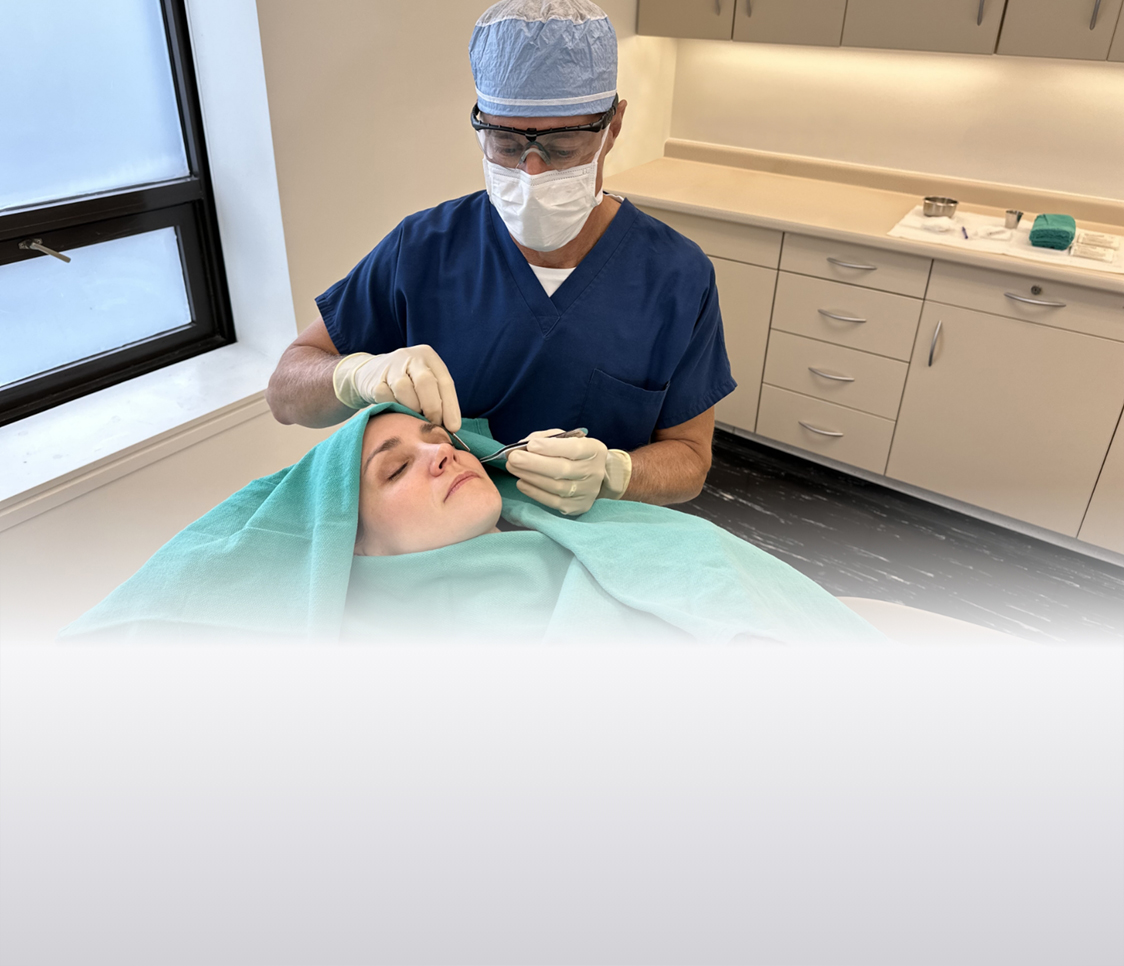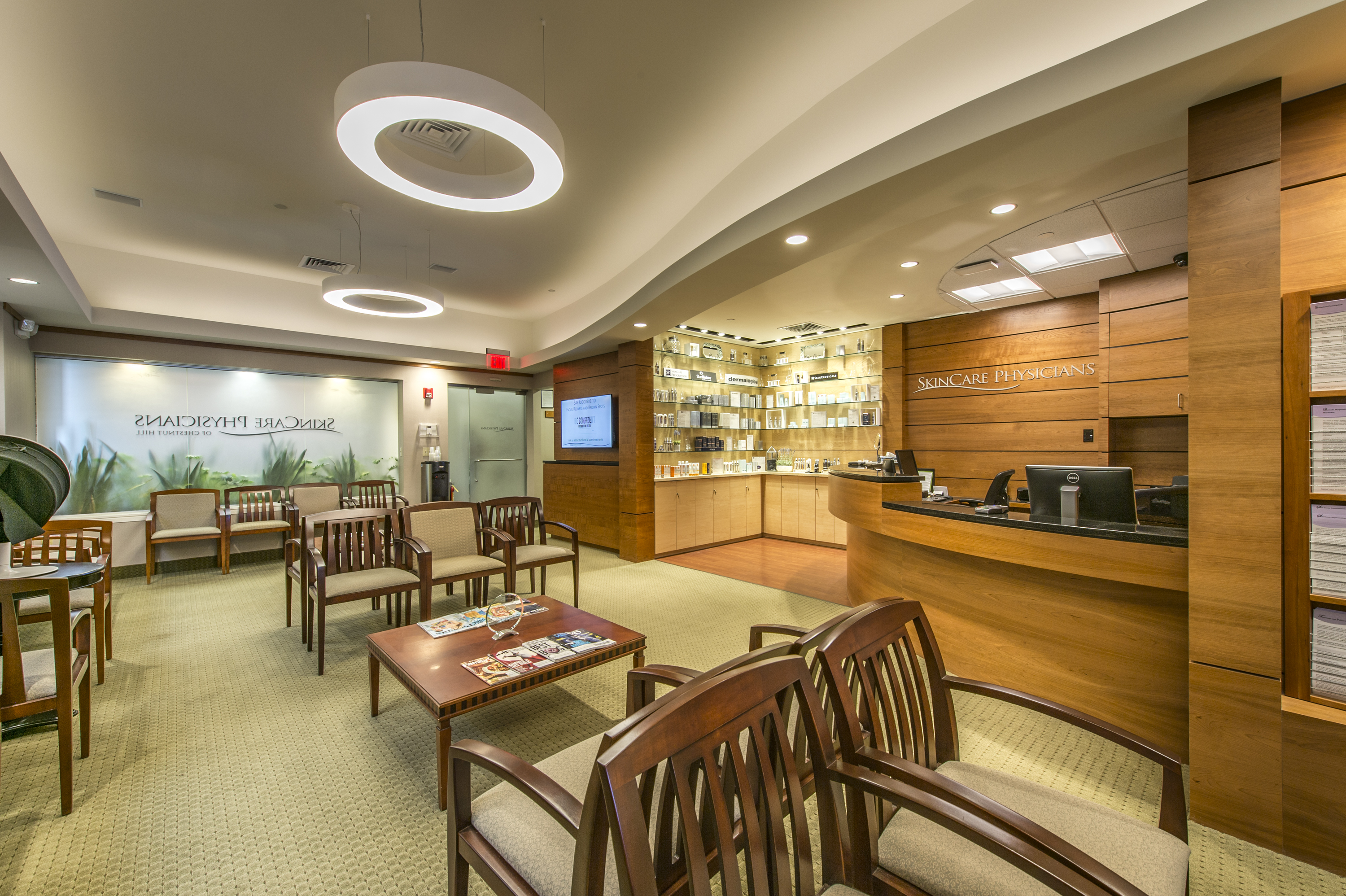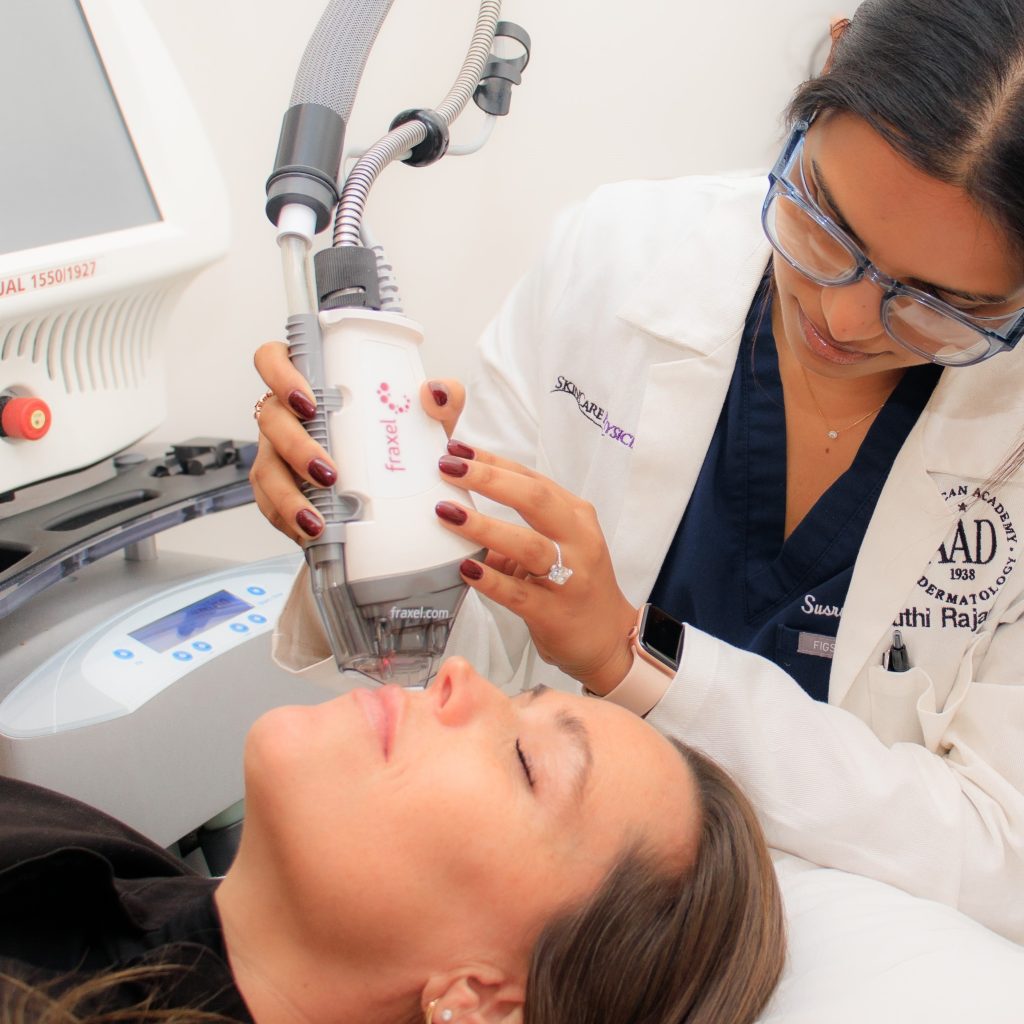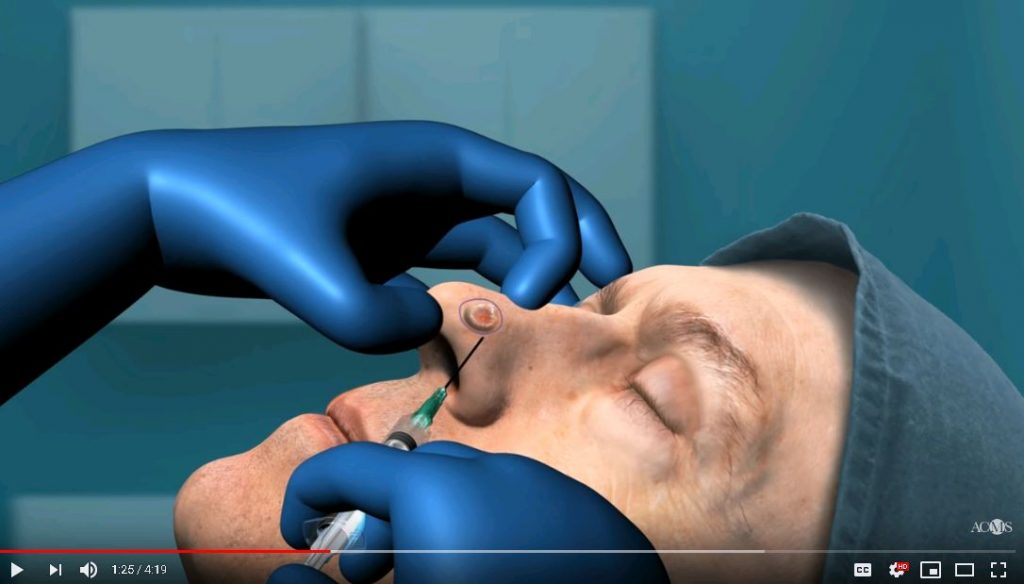- The benefits of Mohs surgery
- The most common indications for using Mohs surgery
- What to expect on the day of the Mohs surgery
- Removal of small layers in stages and map creation
- Repairing the wound
- Mohs procedure step by step – Video
- Preparing for the Mohs procedure
- After the Mohs procedure
- Suture removal

- Home
- Services
- Surgical Dermatology
- Mohs Micrographic Skin Cancer Surgery
Mohs Micrographic Skin Cancer Surgery

Mohs Micrographic Skin Cancer Surgery
Microscopically controlled surgery was developed by Dr. Frederick Mohs in the 1940s as a more precise way to remove skin cancers. Originally, chemicals were applied to the skin and the entire surgical procedure could take several days. The technique has been refined over the years to the point where the skin cancer is now removed and examined under the microscope for any remaining tumor almost immediately. The basic principle behind the Mohs technique is to remove the entire skin cancer without taking any more normal skin than is absolutely necessary. At SkinCare Physicians, our team is highly trained and experienced in performing Mohs micrographic surgery for our Boston skin cancer patients.
To find out if Mohs surgery is an appropriate skin cancer treatment for you, request a consultation online at our practice near Boston or call our dermatology office at (617) 731-1600 to schedule an appointment.
The benefits of Mohs surgery
What can be seen on the skin surface frequently only represents a part of the actual skin cancer, “the tip of the iceberg” so to speak. The human eye cannot see the “roots” of the skin cancer that are under the skin surface. Instead of guessing approximately how far these “roots” extend under and around the skin cancer, the microscope is used to trace out and map the exact extent of the tumor. The surgeon may then remove only the cancerous tissue. This prevents:
- Removing too little, and leaving tumor behind to come back or recur (usually larger) in the future.
- Removing too much, and creating a larger than necessary wound.
In essence, the best of both worlds is achieved with this technique. The entire skin cancer is removed and as much as possible of the normal skin is preserved. The Mohs microscopically controlled technique offers a cure rate of 98 – 99%, the highest of any technique available.
The most common indications for using Mohs surgery
Since Mohs’ surgery requires highly trained personnel, and can be time consuming, it is reserved only for certain cases. It is most commonly used for basal and squamous cell carcinomas occurring on the face, hands, or feet. The four most common indications for using the Mohs’ technique are:
- When the tumor is located on a structure that is so important that one wishes to remove only the diseased tissue and preserve as much of the normal skin as possible (face, hand, etc.)
- When the cancer has been previously treated and has come back (recurrent tumors).
- When the margin or extent of the tumor cannot be discerned.
- When the tumor occurs in an area of the body where it is not effectively curable with other methods.
For more information on the three different types of skin cancer, refer to Skin Cancer Condition.
What to expect on the day of the Mohs surgery
Mohs’ surgery is a minor surgical procedure, performed on an outpatient basis in an ambulatory surgery or office setting. The biopsied site will be identified by you, your physician or one of his/her assistants. The area around the skin cancer will be cleaned, and the skin cancer will be marked with a sterile marking pen. A local anesthetic (lidocaine) will then be injected to the area. This is generally the only part of the surgery that causes any discomfort, and it is usually no worse than what was experienced with the biopsy.
Removal of small layers in stages and map creation
Once the area is numb, a small layer of tissue will be removed and a map of it will be made. The small amount of bleeding that may occur is stopped with an electric cautery unit and a dressing is placed on the wound. This part of the procedure typically takes 10 to 20 minutes.
At this point, the removed tissue is frozen, cut for microscopic slides, put through a series of stains that highlight the skin cancer cells, and cover slipped. Your physician will then review these slides under the microscope and create a map of any remaining tumor. In this manner, the exact location of any residual tumor may be determined and then removed, without having to remove any of the skin that appeared normal under the microscope. This process takes about 40 minutes.
Although the area should still be numb from the first stage, a little more anesthetic agent is generally added (usually painlessly) to keep the area numb for further stages and the reconstruction. Using the microscopic “map” of the skin cancer, only the area or areas seen as cancerous are then removed. The process is repeated until the entire skin cancer is removed. It is this process of systematically searching out and removing all of the “roots” of the skin cancer that gives Mohs’ surgery its cure rate of 98-99%.
Although some skin cancers are removed in one stage, the average tumor requires two or three stages for removal, and some require several more. The total time of your visit will depend on how many stages or times this process must be repeated. The intent is to remove the entire skin cancer, and to preserve any uninvolved normal skin. To achieve these goals, the tissue must be removed in very small, conservative layers.
Repairing the wound
When the tumor has been completely removed, a decision will be made as to the best method to repair the wound where the skin cancer had been. Depending on the size and location of the wound or defect, it may be
- allowed to heal by itself,
- closed side to side with sutures, or
- closed using a local skin flap or graft.
Almost all wounds are repaired on the day of surgery; however, it is occasionally necessary to utilize the unique skills of other surgical specialists. In these cases, the reconstruction will be arranged to occur later that same day or on a subsequent da shortly thereafter.
Mohs procedure step by step video
Preparing for the Mohs procedure
There is usually no special preparation required before the Mohs’ surgery.
- We recommend being well rested and having a good breakfast on the morning of surgery. If your surgery is scheduled in the afternoon you should have a good lunch as well.
- Continue to take all of your prescribed medicines. We do not recommend coming off prescribed anticoagulants such as warfarin (Coumadin), Heparin, Plavix, and Trental. Unless it is medically necessary, we ask that you do not take aspirin or aspirin containing products, such as Anacin and Bufferin, for ten days prior to surgery unless a physician has prescribed them for you. Ibuprofen containing products, such as Motrin and Advil, should also be avoided prior to surgery. You may take Celebrex or acetaminophen products, such as Tylenol. We also ask that you do not take natural products that are known to increase bleeding such as Vitamin E, Ginko biloba, ginseng, and garlic to name a few. Take all of your other usual medications unless directed otherwise.
- We require that you do not drink any alcohol for four days prior to surgery, since this also thins the blood (dilates the blood vessel) and may cause more bleeding.
- We recommend washing your hair the night before or the morning of surgery, as your wound and initial dressing must remain dry for the first 24 hours.
- We finally suggest you wear loose fitting, comfortable clothing.
The length of the surgery varies greatly depending on the size and location of the skin cancer. Although the average length is approximately 1 ½ – 2 ½ hours, you should plan on spending significantly longer with us. You should also arrange to have someone drive you home after surgery.
After the Mohs procedure
Detailed written instructions on wound care will be given to you and reviewed upon completion of the surgery.
Most patients do not report more than a minimal amount of discomfort the first day or two following surgery. This discomfort usually responds readily to Tylenol in its usual dosage. We do not want you to take any aspirin or ibuprofen containing products for three days following surgery as they may increase bruising.
There may also be a normal sensation of itching or tightness that is experienced in the immediate post-operative period and some shooting sensations that can continue periodically for up to a year.
It is common to have “black and blue” marks and swelling around the site of surgery. This reaction is particularly frequent and exuberant around the eyes. Most of this is your body’s reaction to being wounded. This usually gets worse for the first three or four days after surgery, and then slowly begins to improve over the next week.
You may also experience some numbness around the area that was operated on. There are many small nerves that carry sensation to the skin. Some of these may be cut during surgery, and it may take 6 – 12 months before full sensation returns. Sometimes the skin cancer involves larger nerves. When these are cut, the loss of sensation or muscle weakness may be permanent.
Scars continue to improve for 8-16 months. After the first month, the area can be gently massaged if it feels thick or lumpy.
Suture removal
You will be seen for suture removal seven (if surgery is on the face or neck) or fourteen (if surgery is on the rest of the body) days after surgery. We will also likely see you again four months after surgery to make sure everything has healed according to schedule. After the four-month visit, you should be monitored by your general dermatologist every six months to a year for new skin cancers.
Learn more about Skin Cancer and Mohs’ Microscopically Controlled Surgery. Download full Guide





